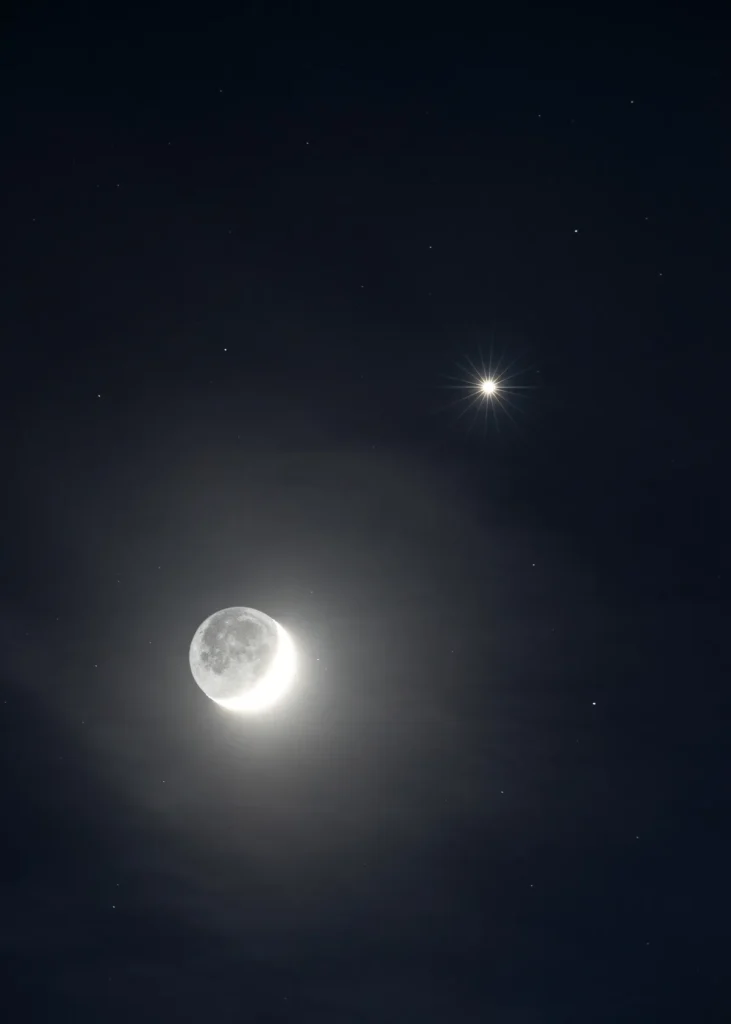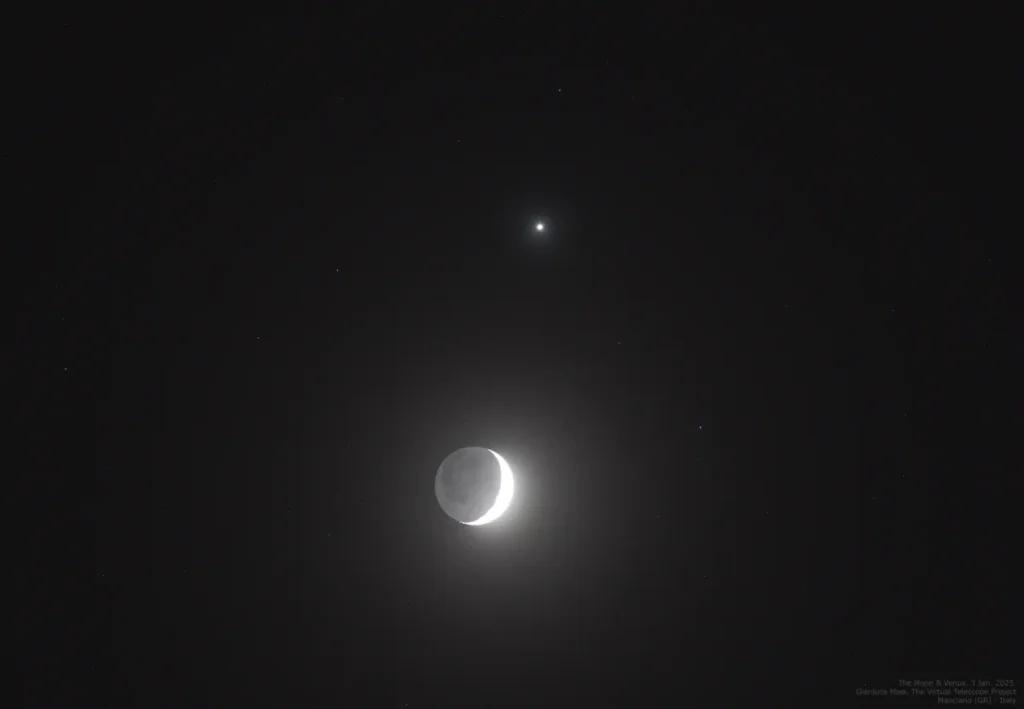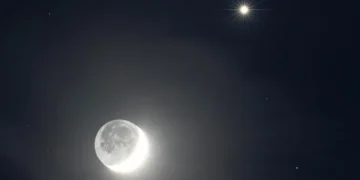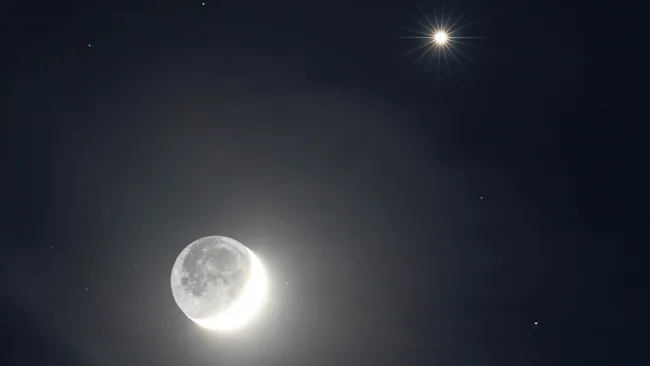The night sky never ceases to amaze, offering breathtaking views of the cosmos that inspire awe and curiosity. On January 3, 2025, skywatchers around the globe were treated to a spectacular conjunction of Venus and the crescent moon. This celestial pairing captivated photographers, amateur astronomers, and casual stargazers alike, showcasing the timeless beauty and wonder of the universe.
What is a Conjunction? Understanding the Celestial Phenomenon
A conjunction is a celestial event where two astronomical objects appear close together in the sky from our vantage point on Earth. On this particular evening, Venus, often referred to as the “Evening Star,” and a waxing crescent moon shared the celestial stage in the Aquarius constellation. Despite being separated by millions of miles in space, they appeared within three degrees of each other, creating a striking visual alignment.

Venus, the second planet from the sun, shines brightly in the night sky due to its highly reflective cloud cover and proximity to Earth. This month, it outshines even Sirius, the brightest star. The crescent moon, illuminated by sunlight reflecting off its surface, added a subtle glow, creating a stunning juxtaposition against Venus’s brilliance. The phenomenon was visible for several hours after sunset, providing ample opportunity for observers to marvel at the spectacle.
Global Perspectives: Capturing the Conjunction Around the World
The Venus-moon conjunction sparked excitement worldwide, with photographers and astronomers capturing its beauty from various locations. Each vantage point offered a unique perspective, emphasizing the universal allure of celestial events.
- United Kingdom: Josh Dury captured a mesmerizing image from the Mendip Hills in Somerset, where Venus and the moon appeared as radiant companions against the twilight sky.
- Italy: Gianluca Masi of the Virtual Telescope Project documented the event from Manciano, showcasing Venus shining just above the crescent moon.

- China: In Yinchuan, the celestial pair was visible even amidst city lights, demonstrating their brilliance.
- France: Photographer Thierry Monasse framed the conjunction between trees in Hauts-de-France, capturing the serene glow of the moon and Venus during sunset.
- Portugal: Rui Santos highlighted the duo above the buildings of Leiria, blending urban landscapes with celestial wonders.
A Gateway to Astronomy: Inspiring Curiosity and Exploration
Celestial events like this conjunction serve as gateways for many into the world of astronomy. They encourage people to look up, sparking questions about the universe and our place within it. For amateur astronomers, such events offer opportunities to hone their observational skills and share their passion with others.
This conjunction also serves as a reminder of the importance of preserving dark skies. Light pollution, particularly in urban areas, can obscure celestial wonders. Advocacy for dark-sky initiatives ensures future generations can continue to experience events like this in all their splendor.
Cultural and Artistic Inspiration: The Universal Appeal of the Night Sky
The moon and Venus have long held symbolic significance in cultures worldwide. The moon represents cycles and renewal, while Venus has been associated with love, beauty, and mythology. Their conjunction on January 3 added a new chapter to their storied history, inspiring photographers and storytellers to capture the magic of the moment.
Images of this event have circulated widely, highlighting the role of photography in making astronomy accessible to all. By framing celestial events within familiar landscapes, photographers bridge the gap between the cosmos and our everyday lives.
What Can We Learn From Events Like These?
The Venus-moon conjunction offers several lessons beyond its visual impact. Scientifically, it provides opportunities to study the brightness and movement of celestial objects, refining our understanding of their orbits. Culturally, it emphasizes the shared human experience of looking up at the night sky, transcending borders and uniting people in wonder.
For those interested in stargazing, this event highlights the importance of preparation and awareness. Simple tools like star charts or astronomy apps can enhance the experience, guiding observers to celestial pairings and other phenomena.
Conclusion: A Celestial Symphony That Unites Us All
The January 3 conjunction of Venus and the crescent moon was a breathtaking reminder of the beauty and complexity of our universe. It captivated observers worldwide, bridging cultural and geographical divides with its universal appeal. Beyond its aesthetic charm, the event underscored the precision of celestial mechanics and the enduring allure of the night sky.



















